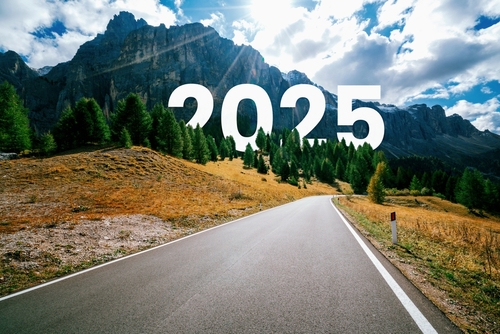Modern Insurance Magazine talks with Paul Sell, Business Consultant for Industry Insights, about the impact the electric and the connected car will have on the credit hire industry in the future

What effect will both electric and connected vehicles have on the credit hire and repair sector over the coming years?
With an estimated worldwide stock of 346 million connected cars (by 2023), OEMs will have a mature Connected Vehicle product in market that will impact the volumes and referral channels across the credit-hire industry, introducing new challenges to be overcome in repair.
The EV forecast is also rapidly growing. Deloitte’s global EV forecast is for a compound annual growth rate of 29% achieved over the next ten years. EVs are likely to have in excess of approximately 32% of the total market share for new car sales by 2030. Additionally, both government and OEM commitments (see the recent announcements from Ford and Jaguar), could push through these forecasts. OEMs are developing compelling propositions, improving battery ranges, lowering prices of EV’s and increasingly adopting “SOTA” (software over the air updates), investing billions in development of new vehicles to create engaging connected car experiences.
The future of the vehicle data market
Consulting firm McKinsey & Co projects the market for vehicle data could grow to $750 billion globally by 2030. They identify a variety of scenarios driving the demand. The connected car has already opened new commercial channels allowing manufacturers to drive revenue streams and build commercial alliances that previously did not exist. OEMs will be keen to ensure that they remain at the forefront of that opportunity by using the car as a simple interface with technology. OEMs are evolving into the business of selling an experience by making available enhancements. For example, Audi claim that:
The rules of the game are changing, and car manufacturers are questioning the way they have always defined themselves. They are thinking beyond cars as a product and focusing on the digital world of the customer, a world in which mobility is naturally integrated. The best possible user experience is what is required…vehicles can be personalised and made safer, the driving public protected, and the flow of traffic made more efficient. We aim to systematically digitise our processes and use digital services to open up new business models and sales potential — in retail, in the vehicle and for mobility offers beyond the vehicle.
Software over the air updates, “SOTA”
The rapid development of connected car technology is creating a paradigm shift, in particular with the development of software over the air updates (“SOTA”) utilising the vehicle’s built-in WIFI, 4G or 5G connection. The implications in terms of improving the service offering to a customer are quite material. This technological evolution could also disintermediate the insurance channel if, for example, they choose to sell insurance priced on different rating factors including vehicle usage and driving style, rather than just the standard proxies. Logically, if insurance is seen as an opportunity for OEMs, then so too must the management and cost associated with claims and the potential for alliances with appropriately focussed insurance operators.
These attractive offerings come with a desire to control the customer experience and keep the customer in like-for-like vehicles at a time of mobility need, e.g., not experiencing another OEM’s EV. This not only increases the need for Connected & EV hire vehicles as the numbers increase in the car park, but for specific EV’s for specific customers. Additionally, with the average value of an EV being higher, it is likely a greater percentage of them will be deemed repairable. For example, less total losses but with a range of purchasing options which will need to be considered at this point. However, it is likely the repair of an EV could take longer with various complexities to navigate. According to the IMI, 97% of active mechanics aren’t suitably qualified to work on electric vehicles. Mechanical work required is almost always referred back to the dealership.
As the regulatory landscape has impacted the profitability of the credit-hire transaction over the last five years, and with further regulation likely, the prospect of the connected car should alert credit-hire companies to the need to review their business strategy and mix.
The changing scene of an accident
Subject to the motorist granting the OEM permission to utilise the data generated from the car, the key issue for the credit-hire industry is that manufacturers can, and probably will, engage with their customers at the scene of an accident. Examples being;
- BMW launched BMW Accident Call in 2017, giving an indication how advanced their thinking was two years ago before interest in the opportunities created by the EU regulations gathered pace;
- JLR, for example, has made SOTA retrospectively available to all compatible vehicles registered after 2015;
- Mercedes Benz has written to owners, advising customers that their app can be utilised on vehicles manufactured post 2012, subject to an adapter being purchased and launching of their ‘Mercedes Me’ app;
- Audi has launched its updates over the air with the new e-tron SUV range. They also plan to give customers the opportunity to upgrade from older less expensive models, and enhance the functionality of their existing vehicle using the same or similar over the air update route;
- BMW launched over the air updates in May 2019 for all of their vehicles operating Version 7.0 or above of their operating system;
- Volvo and others are also on course to offer similar functionality over the air and some already have established Accident Assistance Services
With vehicle sensors capable of transmitting data defining the points of impact and the severity (calculated by refence to speed, angle of attack, location of impact and impactive g-force) then a manufacturer will be ideally placed to use AI to estimate the extent of damage to the vehicle. As well as determine the best avenue for repair immediately and certainly well before the insurance company has received notification of an accident and instructed their engineer several days later. These tools which facilitate such a development are under construction at Audatex, with Mitchell and others looking for the opportunity to have a part in this new control of the process.
The commercial model is already changing, already impacting both the capture, complexity and revenue models of both repair and credit hire.
Paul Sell, Business Consultant, Industry Insights
Read more articles from Modern Insurance Magazine here



